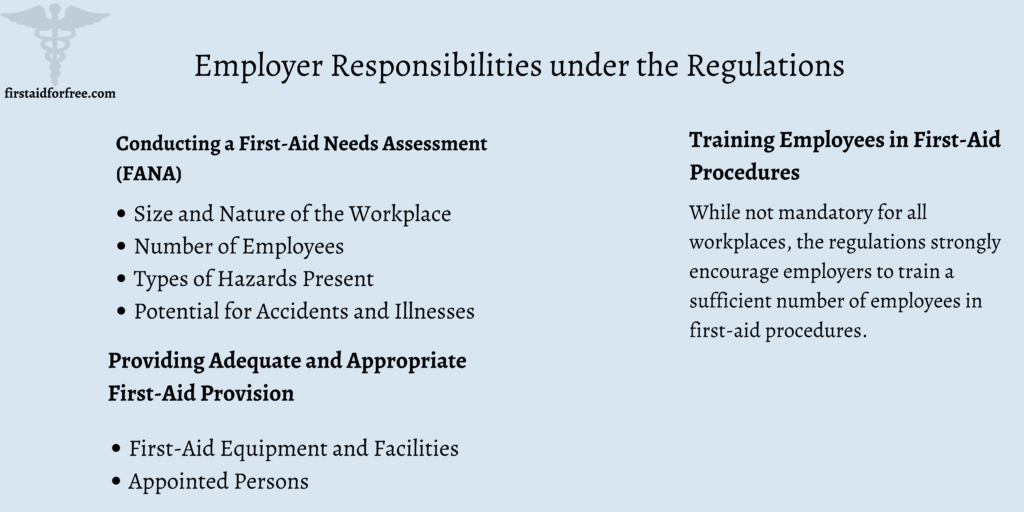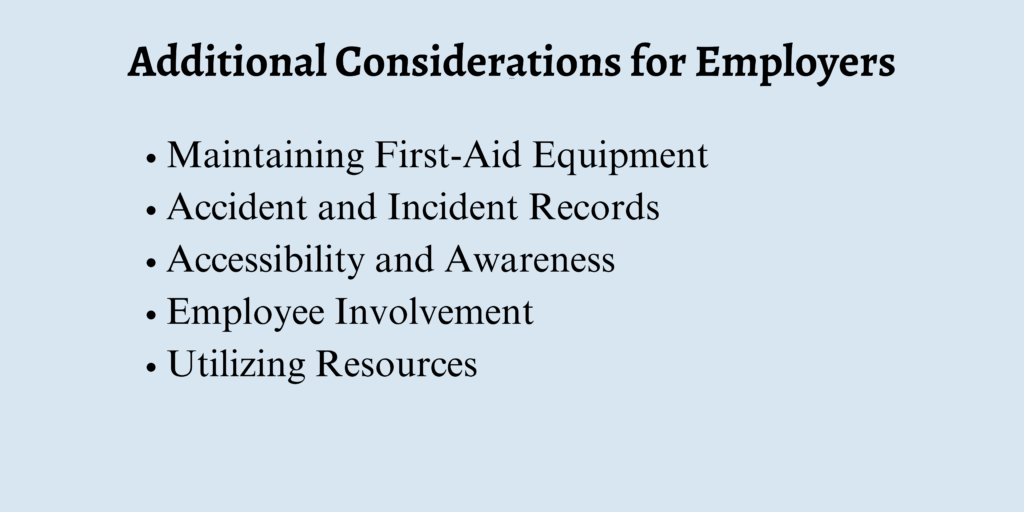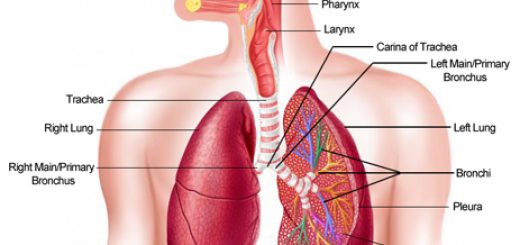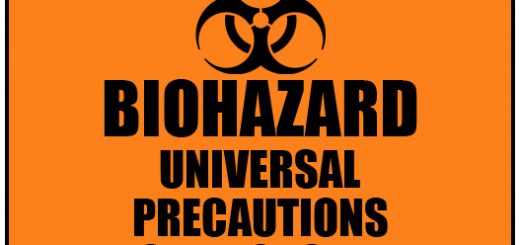What Does HSE Stand for in First Aid: A Guide
Have you ever bumped your elbow at work or felt a sudden headache coming on? It happens to all of us! But what if something more serious happened? This is where health and safety (HSE) comes in.
Think of HSE as a superhero for workplaces. It makes sure everyone stays safe and healthy on the job, from preventing accidents to being prepared for emergencies. In this blog post, we’ll break down what HSE means, why it’s important, and what employers and employees can do to create a safe and healthy work environment.
What are the Health and Safety (First-Aid) Regulations?
In the context of first aid, HSE stands for Health and Safety (First-Aid) Regulations.
The Health and Safety (First-Aid) Regulations, established in 1981, are a cornerstone of workplace safety. These regulations serve a critical purpose: ensuring that every employee has access to immediate and appropriate first aid if they face any injury or sudden illness at work.
Having readily available first-aid supplies and trained personnel can make a world of difference. The Health and Safety (First-Aid) Regulations aim to prevent these incidents from escalating by mandating a proactive approach to first-aid preparedness.
Here’s a closer look at the key aspects of these regulations:
- Legal Requirement: It’s crucial to understand that these regulations are not mere suggestions; they are a legal obligation for all employers, regardless of the size or nature of the workplace. This means failing to comply can result in penalties and prosecution.
- Universal Application: The regulations encompass all workplaces, extending protection to traditional office environments as well as more hazardous settings like construction sites or factories.
They also apply to self-employed individuals, ensuring everyone has a safety net in case of emergencies. - Focus on Prompt Action: The core principle driving these regulations lies in the timeliness of first-aid intervention. Every second counts in emergency situations, and the regulations aim to minimize the delay between an incident and receiving initial medical attention.
- Adaptability to Workplaces: The regulations are not a one-size-fits-all solution. They recognize that different workplaces have varying levels of risk.
The regulations require employers to conduct a first-aid needs assessment to determine the specific requirements for their workplace.
Health and Safety (First-Aid) Regulations act as a safety net for employees. They ensure a baseline level of preparedness in case of emergencies, promoting a safer work environment for everyone.
Employer Responsibilities under the Regulations

The Health and Safety (First-Aid) Regulations place a clear duty of care on employers to ensure their employees have access to appropriate first-aid treatment. Fulfilling this responsibility involves a multi-pronged approach. Let’s know what employers need to do to comply:
1. Conducting a First-Aid Needs Assessment (FANA):
This is the foundation upon which all other first-aid provisions are built. A FANA is a crucial first step that allows employers to identify the specific first-aid needs of their workplace.
This assessment should be a comprehensive process, taking into account several key factors:
- Size and Nature of the Workplace: A small office with low-risk activities will have different first-aid needs compared to a large warehouse with potential hazards like heavy machinery or hazardous materials.
- Number of Employees: The number of employees directly impacts the scale of first-aid provisions needed. A larger workforce might require more first-aid kits strategically placed throughout the workplace or a higher number of trained first-aiders.
- Types of Hazards Present: The types of hazards present in the workplace will determine the specific first-aid supplies needed. For instance, a workplace with a risk of burns might require a burn treatment kit in addition to standard first-aid supplies.
- Potential for Accidents and Illnesses: Assessing the likelihood of specific accidents and illnesses helps to create the first-aid provision. This could involve considering factors like the type of work performed, use of machinery, or potential exposure to allergens or other triggers.
2. Providing Adequate and Appropriate First-Aid Provision:
Once the FANA is complete, employers must decode the identified needs into concrete first-aid provisions. This involves two key elements:
- First-Aid Equipment and Facilities:
The regulations mandate readily available first-aid kits that are well-stocked with essential supplies. The contents of the kit should be determined by the FANA but generally include items like dressings, bandages, antiseptic wipes, pain relief medication, and any specific items identified as potential hazards.
- Appointed Persons:
Employers must designate one or more individuals to take charge of the first-aid arrangements. These “appointed persons” can be existing employees who receive training on their responsibilities. The level of training and number of appointed persons will vary based on the size and risk profile of the workplace.
3. Training Employees in First-Aid Procedures:
While not mandatory for all workplaces, the regulations strongly encourage employers to train a sufficient number of employees in first-aid procedures.
This training can range from basic first-aid awareness to more advanced first-aid responder certifications, depending on the FANA and the needs of the workplace.
Additional Considerations for Employers

Here are some additional considerations that demonstrate a proactive approach to first aid:
Maintaining First-Aid Equipment: First-aid kits are not a “set it and forget it” solution. Employers are responsible for ensuring they are properly maintained.
- Conducting regular checks ensures all supplies are present, in good condition, and not past their expiry date. Expired items should be replaced immediately to maintain the kit’s effectiveness.
- First-aid kits must be restocked with the used items after each use. This ensures they are always fully equipped to handle future emergencies.
- Consider providing employees with basic training on using the first-aid kit contents. This empowers them to confidently utilize available resources while waiting for professional medical assistance.
Accident and Incident Records: Maintaining an accident book is a crucial practice. This record book documents all work-related accidents and illnesses, regardless of severity.
The information recorded can include details like the date, time, nature of the incident, and any first-aid administered. Accident books serve several purposes:
Accessibility and Awareness: First-aid kits and appointed persons should be readily accessible and easily identifiable throughout the workplace. Distribute first-aid kits in easily accessible locations.
Regularly communicate the location of first-aid kits and appointed persons to all employees through training sessions, safety posters, or staff meetings.
Employee Involvement: Including employees in discussions and initiatives related to first-aid can promote a culture of safety and preparedness.
Consider involving employees in the first-aid needs assessment process. They might have valuable insights into potential hazards or specific needs within their work areas.
Create an environment where employees feel comfortable reporting any concerns about first-aid provisions or potential safety hazards.
Utilizing Resources: The Health and Safety Executive offers a wealth of resources to help employers comply with the first-aid regulations.
The HSE website provides detailed guidance documents on first-aid needs assessments, first-aid kit contents, and training recommendations. It also offers various support services to help employers understand and implement the regulations effectively.
FAQs
Do first-aid regulations apply to me?
Yes, the Health and Safety (First-Aid) Regulations apply to all workplaces, including self-employed individuals.
What do I need to do as an employer?
You need to conduct a first-aid needs assessment, provide appropriate first-aid supplies and training, and designate responsible personnel.
What if I work for myself?
You’ll need to assess your work hazards, assemble a suitable first-aid kit, and ensure it’s accessible in your workspace.
Conclusion
We hope this article helped you understand everything about HSE.
Maintaining a safe working environment is essential, and to do so, employers must follow all HSE rules and regulations to keep their employees safe from hazards.





